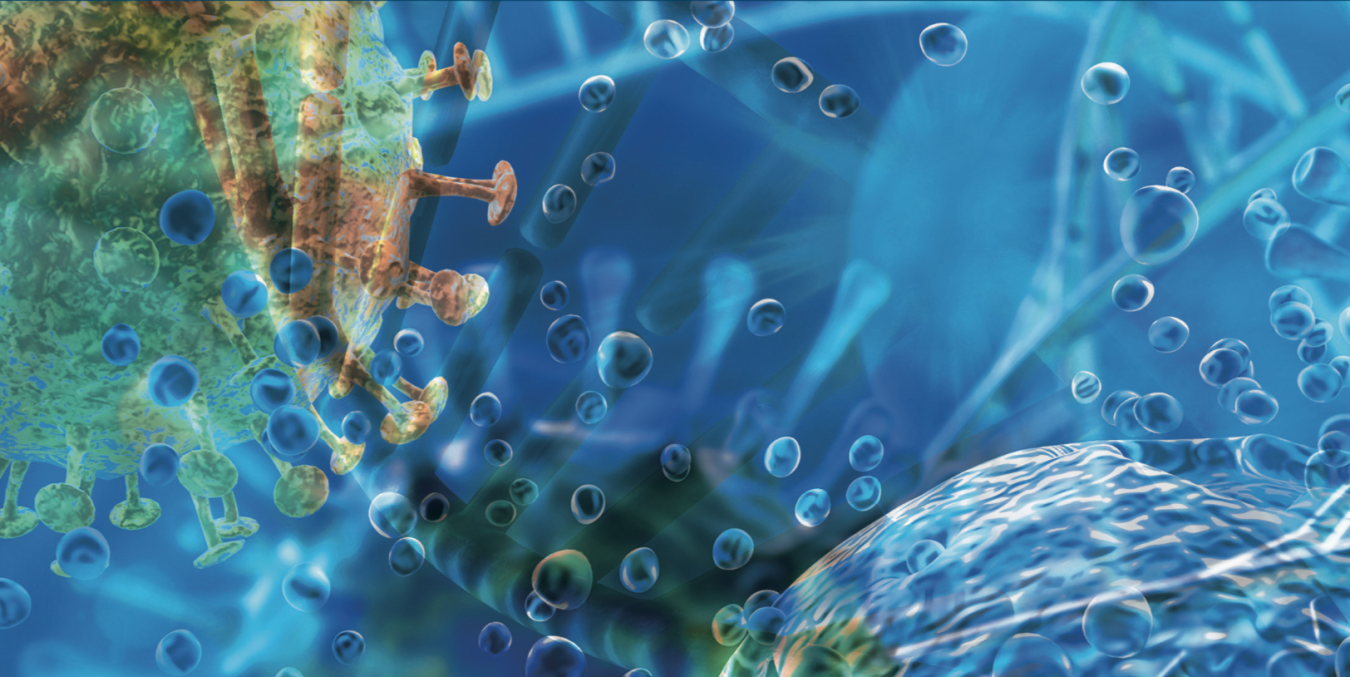WHAT DOES IT MEAN TO BE ALIVE?
This may seem like too philosophical a question to open a story about chemistry and biochemistry research at UCLA. But 20 years ago that same question gave Bill Gelbart, distinguished professor of chemistry and biochemistry, a mid-life crisis.
Instead of buying a sports car or going to find himself on some distant mountain, he did something much harder. He changed the focus of his research and, in turn, helped shape the trajectory of an entire department.
You see, for 30 years, Bill had been a theoretical physical chemist—one of the world’s best. He spent his time thinking about and teaching quantum mechanics, statistical mechanics, and thermodynamics. Like any good physical theorist, Bill was constantly looking for new structures to conduct theories on. One day, he asked himself what the simplest evolving organism to which he could apply physical theory might be. The answer, of course, is a virus. While even a simple one-celled organism can have 20,000 genes, a virus can have as few as two.
That realization led to a complete shift, from physical chemistry to molecular biology and virology. Today, Bill, along with a host of other scientists in UCLA’s chemistry and biochemistry department, are using their unique training to better understand, combat, and even use viruses. From designing new tools to look closely at how viruses work to engineering novel structures that combat infections and new approaches to diagnostics, their work is helping to make our world a better place.
Irene Chen: A Vaccine for Bacterial Infections
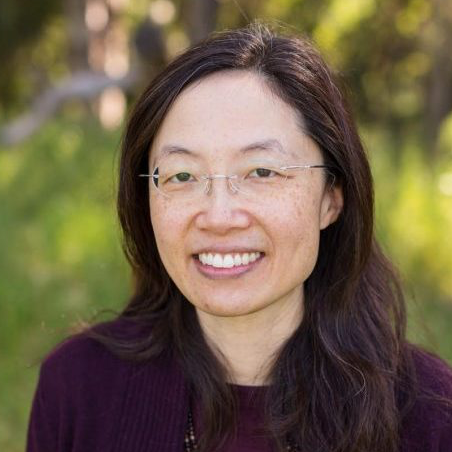
“There are more chemists working on virology than many people realize,” says Irene Chen, UCLA associate professor of chemistry and biochemistry and of chemical and biomolecular engineering. “That’s because viruses are beautiful structures. They have a unique symmetry that, as chemists, we can understand.”
Chen focuses on a particular kind of virus called phages. These little structures, which are the most numerous organisms on the planet, only reproduce in bacterial cells. For every strain of bacteria out there, there is a phage that is specifically evolved to attach and infect that bacteria. But finding the right phage in nature can be hard.
Instead, Chen’s approach is to use a phage we already know very well, called M-13, which exists in E-coli. The goal is to use this phage as a model and engineer it to have the effect we want. “Eventually, we hope to engineer one phage instead of hunting for the right one in nature. Much like how we would build a vaccine. It’s like a vaccine for bacterial infections,” she says.
Shimon Weiss: Bringing Antiviral Medicine to Maturity
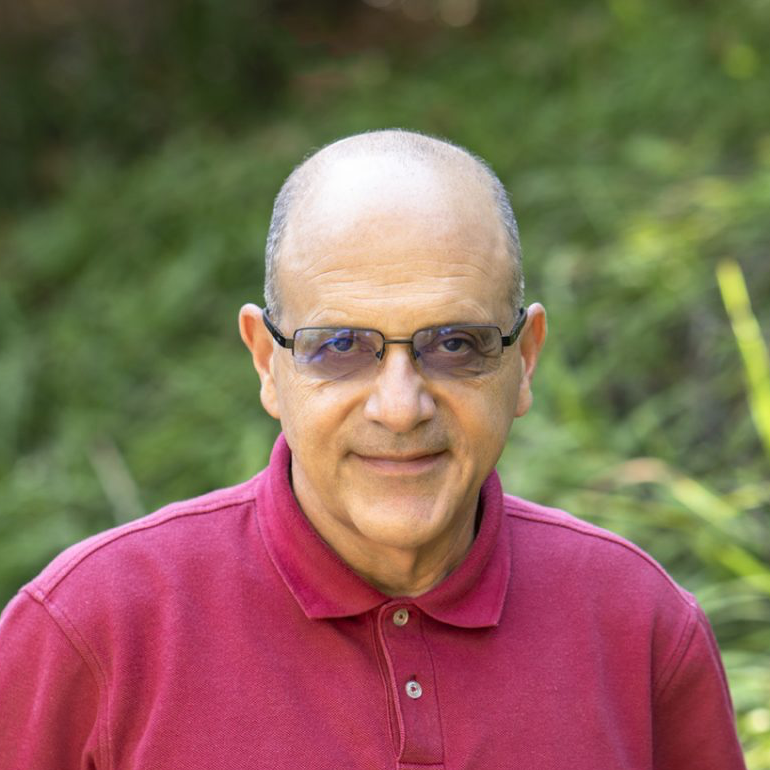
Roughly 80 years ago, modern antibiotics changed the world. Today, we are in the early stages of a new therapy: antivirals. Until recently, the only line of defense against viruses has been vaccines. During the HIV outbreak, researchers began to develop drugs that can be taken to fight viruses already inside the body—much like antibiotics do for bacterial infections. But to make better drugs, you need better tools.
Shimon Weiss, UCLA distinguished professor emeritus of chemistry and biochemistry and of physiology, is one of those toolmakers. Developing effective antiviral drugs is a challenge. You have to target specific proteins that are important to the virus but NOT the host. And to identify those proteins, you need to look at the structure of a virus very closely.
Weiss uses single molecule spectroscopy and imaging to look at the proteins of viruses and better understand how they work. “We attach a dye to a single protein enzyme and follow by fluorescence how each one works, one at a time,” says Weiss. “Then, we can better understand how specific viruses work and ultimately develop better drugs that prevent those viruses from replicating.”
Weiss was originally using this technique to study enzymes in general. But applying his advanced imaging techniques to viruses as a whole has led to a better understanding of the unique way in which COVID-19 infects the body.
Carla Koehler: A Pandemic on a Cellular Level
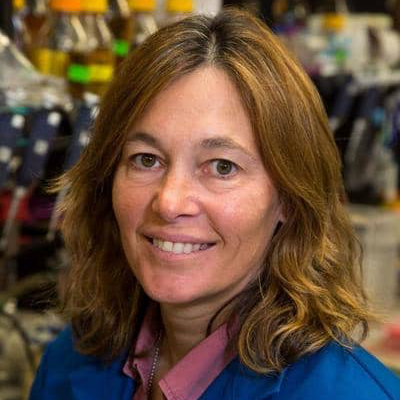
Sometimes, studying viruses can lead us to new understandings of how our own cells work—with huge implications for future treatments. That’s exactly what happened when Carla Koehler, UCLA professor of chemistry and biochemistry, made the shocking discovery of a new form of virus that exists solely in the mitochondria of a cell.
“Cellular RNA is usually single-stranded. Finding double-stranded RNA inside a cell can be indicative of a virus—it’s not something you want in a cell,” says Koehler. “But we’ve discovered that the mitochondria of many cells are actually producing something like a virus within the cell itself. This is unlike anything we have seen before.”
This is like a pandemic on a cellular level. Usually, a virus will populate inside a cell and break out once the cell has been taken over, spreading more virus to new cells in the body. In this case, the virus exists solely in one cell.
Koehler has been conducting joint research in this area for 15 years with Professor Michael Teitell, the director of the UCLA Jonsson Comprehensive Cancer Center. “Right now, we’re interested in the mechanistic process in the cell that is creating this virus-like response. Understanding exactly why and how these cells are acting this way could lead to novel therapeutic treatments for a host of diseases like cancer and Parkinson’s,” said Koehler.
Alex Spokoyny: Building an Unbreakable Lock
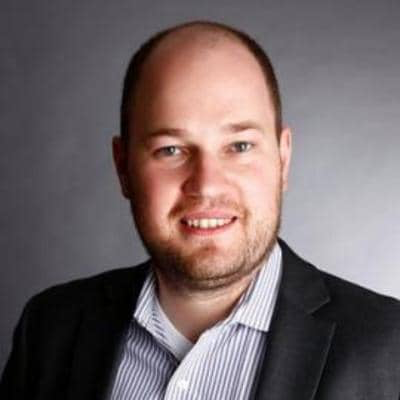
In science, and especially chemistry, researchers sometimes find themselves in areas where they never thought they’d end up. That’s what happened to Alex Spokoyny, UCLA associate professor of chemistry and biochemistry, a classic synthetic chemist experimenting with novel 3D molecules.
“Chemists sometimes ask ourselves, what is this molecular system we created unique for? We realized we could assemble unique molecules about 2–3 nanometers in size,” he said. “We realized these systems could provide unique interactions with biological entities like cell receptors that are scaled similarly.”
His group has made great progress in this area by building molecular “locks” that prevent a virus from docking with the cell’s surface. To create these locks, Spokoyny arranges molecules in three dimensions called multivalent cluster inhibitors. Because every virus is unique, the goal is to create a set of molecules that can bind to many different locations. Think of it like the reverse of a skeleton key, which can open any lock. In this case, the goal is a “skeleton lock” which can seal a number of molecular receptors against viral attacks.
Spokony is now working with collaborators in the medical school to move this research further. They are currently working to test their system on real viruses, such as HIV, in the lab.
Jose Rodriguez: Up Close and Personal With a Virus
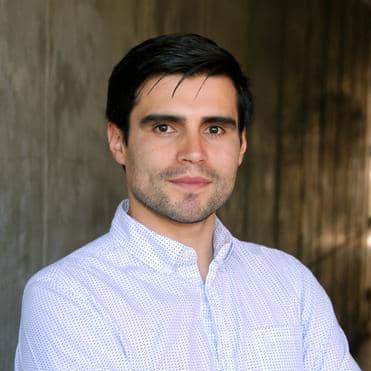
While Spokoyny used his classical chemistry training to make inroads in a biological problem, another researcher, Jose Rodriguez, UCLA associate professor of chemistry and biochemistry, did just the opposite. Rodriguez has embraced interdisciplinary research since his time as a Ph.D. student at UCLA studying molecular biology. “I chose this program specifically because it allowed me to pursue truly interdisciplinary research. I worked on a variety of different projects, including cancer research with the school of medicine and developing imaging technologies for biological systems in the physics department,” he said.
When he joined UCLA’s chemistry and biochemistry department in 2016, this background served him well. A structural biologist who works to better understand molecules, Rodriguez’s research is focused on disrupting the normal function of viruses. By looking closely at the natural molecular structures created by viruses to help them attack cells, he can get a deeper understanding of how viruses function. Only then, once the makeup and functionality of a virus are truly understood, can specific therapies designed to combat those viruses be developed.
Rodriguez says it can sometimes take up to a month just to simply understand the structure of a single virus. The particular virus he’s focused on now is common in South America and causes hemorrhagic fever. “By looking closely at this virus, we found that it has a particular protein on its surface which is not fully understood. This protein is what causes the virus to engage with human cells,” he said.
Rodriguez used imaging methods to get a better look at how this protein works. Now, he and his group are designing new, synthetic molecules that have the potential to block that protein from engaging in the first place.
Bill Gelbart: It’s All About Perspective
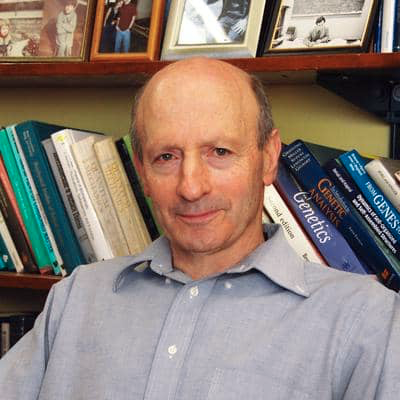
And that brings us, finally, back to Bill. Despite his vast technical experience, what might make him most adept in his newfound home in virology is his perspective. According to Bill, viruses do one thing better than anything else on the planet. And they do that one thing better than anything else does anything. They protect and deliver genes to specific, targeted cells. This, he says, is the most important thing to remember.
If you were a doctor presented with the most perfect gene delivery system known to humans, perfected over billions of years of evolution, wouldn’t you want to get your hands on that system?
That’s exactly what Gelbart is trying to achieve. He designs novel gene delivery techniques using mRNA-containing virus-like particles. In other words, he is using the same model viruses use to infect healthy cells to instead create a tool to treat diseases; infecting cells not with a virus but with medicine. Gelbart describes gene delivery as one of the “holy grails” of 21st century medicine.
SO WHAT DOES IT MEAN TO BE ALIVE? Today, Gelbart is convinced that viruses are not, in fact, alive. What are they, really? And where did they come from? This question isn’t just a philosophical one. Understanding this mystery could one day help us finally solve viruses once and for all.
One idea, and the one Gelbart ascribes to, goes like this: At any given time, thousands of genes in a single-celled organism are being translated into proteins. Somewhere along this line, there was a mutation—a total goof. A simple strand of RNA and a single protective protein broke off from the host.
These new mutations—viruses—were destined to float around the world like lost, wandering children, trying to find their way home. One could argue that viruses were life’s original offspring, emerging billions of years before complex organisms ever came about. And in a way, these lost children DO find their way home. They find their way back into us. In fact, our genome, like the genome of every other living thing, has some viral genes in it. We are part virus.
“I don’t think I could have been any luckier than to be at this particular department, at this particular university, at this particular time. Here we have an amazingly collaborative group of scientists, in a broad discipline, interacting with colleagues across the university—from biology to engineering to health and more.”
Bill Gelbart
Indeed, upon deciding to change research trajectories in the middle of his career, Gelbart was afraid he might have been met with discouragement. Instead, he received encouragement, support, and cooperation from the very beginning. That is exactly that type of culture and mindset that will be needed to solve some of the biggest problems in virology today. And one this department is well positioned to address.
Tags: Research
